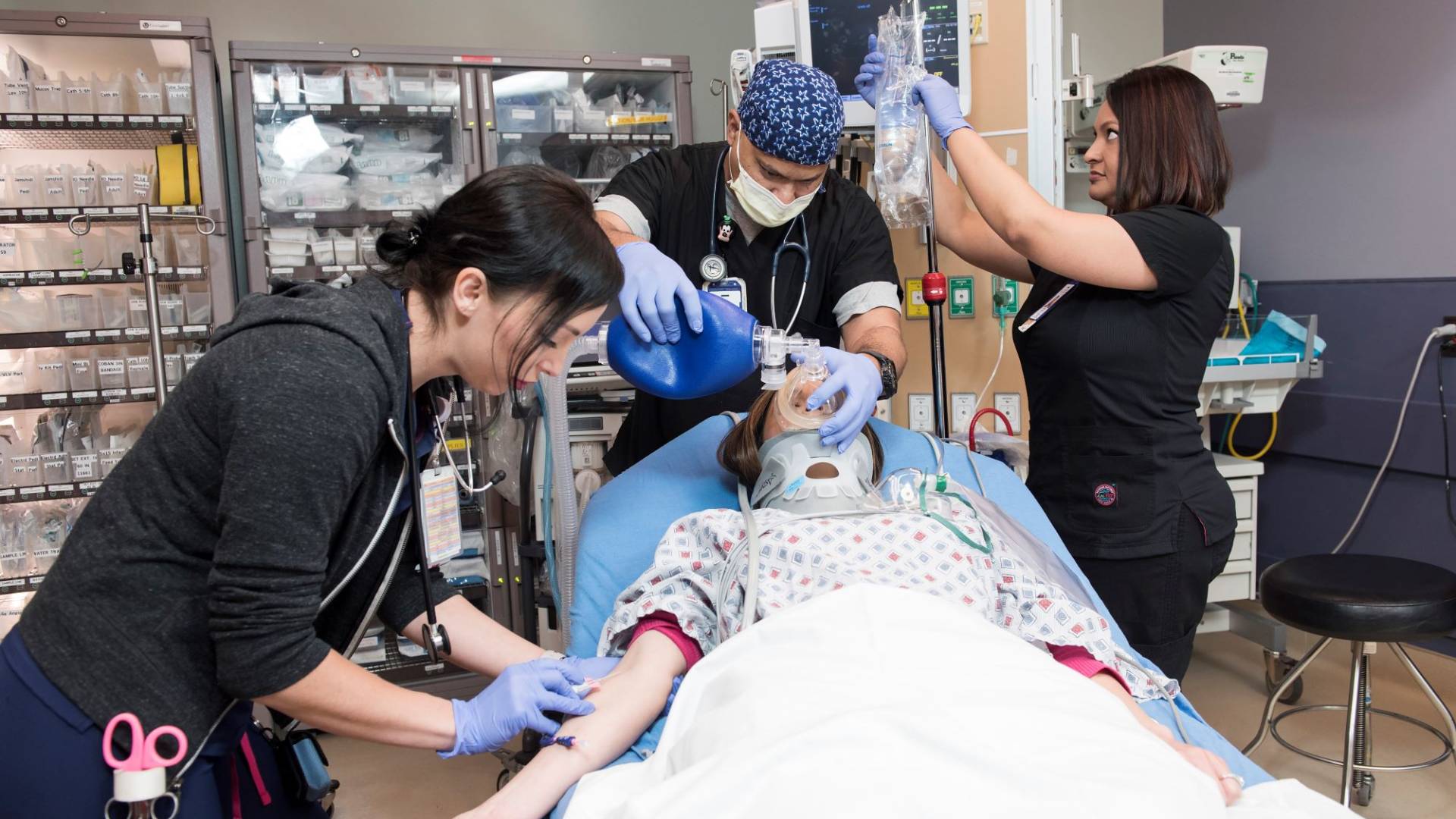About Our School

Mission
The mission of the Paul L. Foster School of Medicine is to provide exceptional educational and development opportunities for our diverse learning community, advance knowledge through research and innovation, and serve the needs of our border region and beyond.
Vision
The vision of the Paul L. Foster School of Medicine is to promote wellness and relieve suffering through excellence in clinical service, innovation, and leadership in border health care.
Our Academic Community
Texas Tech University Health Sciences Center El Paso is a Hispanic Serving Institution situated on the US-Mexico border that is committed to addressing current and emerging health concerns affecting the El Paso community, our region and beyond. Grounded in the compelling evidence that diversity of thought and perspective provides richer solutions to complex challenges, the Paul L. Foster School of Medicine strives to recruit, develop, and retain those best prepared to support its mission.
With these intentions, and mindful of our setting, regional history, and status as a state sponsored school in Texas, the Paul L. Foster School of Medicine emphasizes and encourages the recruitment of students from divergent and various backgrounds: students who are from the US/Mexico border region, who are economically disadvantaged, and those who identify as first generation. Access to the School of Medicine for talented residents, staff, and faculty from all groups is a priority.
Education Beyond Borders
The Texas Tech Health El Paso PLFSOM received more than 2,500 applications for its charter class. On July 9, 2009, the 40 students chosen from the applicant pool took their place in history. These students were selected not only for their high intellectual ability and strong record of scholastic achievement, but also for their varied backgrounds, interests, life experiences, and qualities indicative of academic success. These students´ undergraduate universities included Texas Tech University, The University of Texas (Austin, El Paso, San Antonio, Dallas, Arlington, Brownsville, Permian Basin), Sul Ross University, and the University of Houston. Also represented in the TTUHSC EL Paso PLFSOM inaugural class were the University of Michigan, Rensselaer, Princeton, Baylor, Emory, Rice, Johns Hopkins, and Harvard.
Medical students from the TTUHSC School of Medicine in Lubbock have been training on the El Paso campus for their third and fourth years for more than 38 years. As of July 2011, these TTUHSC-Lubbock students no longer train in El Paso.
Integration is the key to the curriculum of the Texas Tech Health El Paso PLFSOM. Unlike a traditional medical school, which requires students to wait until their third year of studies before they are introduced to the clinical sciences, students at the PLFSOM are immersed into the basic and clinical sciences in their first year. Students learn anatomy, biochemistry, physiology, and other basic science concepts and content needed to understand specific clinical presentations. From the first day of medical school, students are taught to think like a doctor. Active learning comes into play when students interact with highly complex mannequins that simulate everything from cardiac arrest to a vaginal birth in our Center for Advanced Teaching and Assessment in Clinical Simulation (ATACS). Standardized patients, individuals trained to act out symptoms of certain conditions, help students learn how to diagnose specific conditions while also developing their people skills.
Not only is the curriculum integrative, but students are also integrated into the community. At the only four-year medical school on the U.S./Mexico border, students interact with their diverse community through the Society, Community, and Individual course. The course integrates medicine and public health by providing an arena that enhances Spanish language skills, provides an opportunity to experience community medicine and home visits while interacting with members of a health care team, and gives students the chance to experience culturally diverse populations.
The location of the PLFSOM provides students with insight into afflictions and circumstances known in developing countries, while still living in the United States. In the final two years of medical school, students interact with actual patients and gain knowledge in ways that no textbook or simulated situation could ever teach. These experiences provide students with the background to lead the nation in medical care and prevention upon graduation.
Strategic Plan
Planning a visit? Please see our driving directions.
